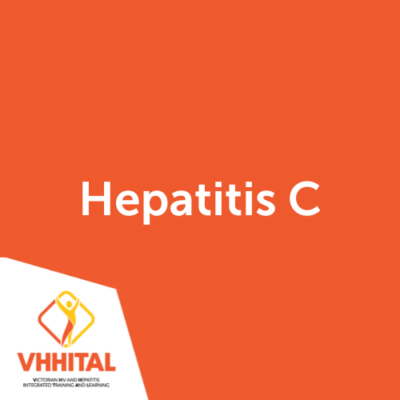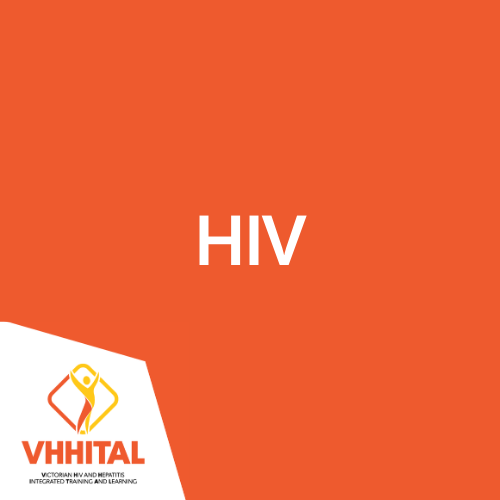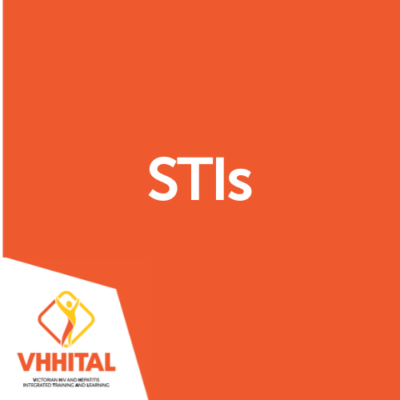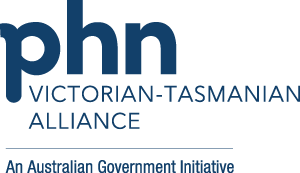Details on this map have been provided to ASHM by HBV s100 Community Prescribers. This map displays prescribers who consented to be publicly listed and is not a comprehensive list of all accredited Australian prescribers.
VHHITAL – Referral and support

Victorian Hepatitis B Plan 2022-2030
The Victorian Hepatitis B Plan 2022-2030 details the Victorian Department of Health’s vision of eliminating hepatitis B as a public health concern by 2030.
This plan is 1 of 7 plans in the Victorian sexual and reproductive health and viral hepatitis strategy 2022–30. It builds on the objectives, focus areas and outcomes in the Victorian hepatitis B strategy 2016–2020. It outlines the priority actions implemented to date and includes new and refocused priority actions needed to meet our elimination agenda.
Viral Hepatitis Mapping Project
The Viral Hepatitis Mapping Project aims to facilitate a comprehensive understanding of chronic hepatitis B (CHB) and chronic hepatitis C (CHC) in Australia by assessing variation in prevalence and care uptake according to geographic region.
Liver Cancer Prevention Flip Chart
As part of helping health workers have a conversation with their patients on the importance of regular monitoring and treatment to prevent liver cancer, Cancer Council Victoria was recently funded by the Victorian Department of Health to develop a flipchart resource. This flipchart contains patient-facing pages with an image and some plain English information, and health worker pages which gives the doctor, nurse or allied health worker more information to verbally discuss with their patient.
"Me, My Baby and Hepatitis B"
St Vincent’s Hospital Melbourne, in collaboration with Cancer Council Victoria, has also recently developed a guided learning resource “Me, My Baby and Hepatitis B” that will support antenatal care providers to discuss hepatitis B testing, vaccination, prevention of mother-to-child transmission, management and liver cancer prevention. It also includes a Clinician’s Quick Guide on Hepatitis B testing and management in pregnancy and beyond.
- Find antenatal resources Resources – St Vincent’s Hospital Melbourne (svhm.org.au)
For more information on both resources, please contact charissa.feng@cancervic.org.au
Hepatitis B Referral and Clinical Support
ASHM have launched their Hepatitis B Referral and Clinical Support Resources.
These been developed for clinicians, especially those who do not routinely work in the hepatitis B space, at the point of hepatitis B diagnosis and initial engagement in care, supporting community-based referrals. They are a suite of complementary resources to guide a clinician through what needs to happen from their first point of contact with someone or diagnosis of hepatitis B, how to decide where their care is best placed, how to talk to them about this and do the referral.
The resources include:
- Next Steps Checklist: This resource provides clear guidance to primary care clinicians on the next steps and clinical requirements around hepatitis B diagnosis and follow-up.
- Interactive Hepatitis B Referral Options Tool: This tool will help decide whether a primary care referral to an s100 prescriber is appropriate or if a tertiary referral to a specialist is required.
- Videos about supporting patient conversations: These videos have been created to provide support and guidance when discussing various aspects of hepatitis B diagnosis and care.
- Patient resource regarding care options: This resource was developed by Hepatitis Australia to explain options for care.
- Prescriber map and collegial communications tools: Includes a referral letter template, roles and responsibilities checklist and a template for ongoing clinical communication.
Hepatitis B Toolkit
This toolkit is an interactive online resource, structured around the most common questions asked by clinicians caring for people living with hepatitis B.
The toolkit is intended to answer clinicians’ initial queries and briefly explain the next steps. Where relevant, links to extra resources and references are provided under each subtopic.
Community resources for each topic are also available on relevant pages.

Victorian Hepatitis C Plan 2022-2030
The Victorian Hepatitis C Plan 2022-2030 details the Victorian Department of Health’s vision of eliminating hepatitis C as a public health concern by 2030.
This plan is 1 of 7 plans in the Victorian sexual and reproductive health and viral hepatitis strategy 2022–30.
Data summaries by PHN
The Hepatitis C data summaries for Victorian Primary Health Networks (.pdf) are an excellent resource to understand the needs of your local area and its demographics. They detail national treatment uptake, notification and geographic data, prevalence, treatment uptake and newly diagnosed cases for each Victorian PHN.
Integrated Nurses
Victorian Integrated Hepatitis C Services: Nurse-led models of care
The Integrated Hepatitis C Services deliver a range of services that align with The Victorian Hepatitis C Plan 2022–2030 to:
- Increase treatment and care
- Increase testing
- Reduce stigma and discrimination
- Increase prevention
Services include:
- Consulting, mentoring and capacity building for health professionals
- Outreach, including co-locating clinics in established services and individual client outreach
- Education and training
- Fibroscan clinics
Integrated Hepatitis C nurse contact list
Contact one of the integrated nurses to discuss how your service/organisation can work in partnership, or refer people for treatment. Click here for a list of contacts (.pdf).
Guiding principles
See the guiding principles for nurse-led models of care in integrated hepatitis C services here.
Broadsheets
These resources have been developed by the Australian Research Centre in Sex, Health and Society (ARCSHS).
- Broadsheet 1: Experience of hepatitis C diagnosis
- Broadsheet 2: Hepatitis C treatment uptake
- Broadsheet 3: Experiences of DAA treatment and hepatitis cure
- Broadsheet 4: Life after hepatitis C treatment
If you would like a copy of any of these resources sent to you, please contact Dr Adrian Farrugia at a.farrugia@latrobe.edu.au
CHECCS
These resources are from the CHECCS program delivered by Doherty Institute and the Victorian Department of Health
For more information on CHECCS and this resource, please email whoccvh@mh.org.au. Follow up for Viral Hepatitis notifications has now been integrated into the work of Victoria’s Local Public Health Units.

HIV Prescriber Map
Details on this map have been provided to ASHM by HIV s100 and PrEP Community Prescribers. This map displays prescribers who consented to be publicly listed and is not a comprehensive list of all accredited Australian prescribers.
Victorian HIV Plan 2022-2030
The Victorian HIV Plan 2022-2030 is 1 of 7 plans in the Victorian sexual and reproductive health and viral hepatitis strategy 2022–30. It builds on the objectives, focus areas and outcomes in the Victorian HIV Plan 2017–2020. It outlines the priority actions implemented to date and includes new and refocused priority actions needed to meet our elimination agenda.
HIV quarterly surveillance report
The report presents data on HIV, notifiable to the department in Victoria under Public Health and Wellbeing legislation. Data are related to notifications received from medical practitioners and laboratories and does not necessarily reflect the true incidence of disease.
Let’s Talk About HIV (Stigma) - reflective practice video
About the resource
With timely diagnosis and access to effective treatment, HIV is now a chronic, manageable condition with normal life expectancy. However, HIV stigma is widely recognised as being a major determinant of HIV health because it delays diagnosis (if people avoid testing) and impedes connection with care, treatment and support.
People with HIV think carefully about sharing their HIV status, and carefully balance the potential benefit of disclosure with the risk of harm. Health care settings are places where people with HIV may choose to share their HIV status, but they can also be the places where stigma, discrimination and privacy breaches are more likely to occur. Among a recent large sample of Australian people with HIV, 30% reported being treated differently by a health care worker in the previous 12 months.[i]
Nurses, midwives and allied health workers have very few opportunities for professional development or reflective practice about HIV, and may have had limited experience working with HIV-positive people.
Let’s Talk about HIV (Stigma) is a new eight-minute reflective practice video and learning resource that has been developed by HIV peer organisation Living Positive Victoria and the HIV Nursing Program at Bolton Clarke.
Most health care workers would not intentionally behave negatively toward people with HIV, but this video recognises that individual health care workers aren’t always sure how to respond or what to do if a patient discloses their HIV status.
Let’s Talk About HIV (Stigma) offers accessible tips and friendly non-judgemental guidance for health care workers about good communication and how to provide culturally safe care to people with HIV. Using a Q&A format, this video features real people with HIV and health care workers having a cup of tea and an Iced-VoVo while discussing safe environments, good practice, allyship, and the importance of having a basic up-to-date knowledge of HIV.
The accompanying learning resource also offers a 1.5-to-2-hour self-directed CPD learning activity, with targeted learning objectives and reflective practice questions.
These can also be used within teams to generate discussion about issues in providing quality care for people with HIV including appropriate questions, privacy protections and standard precautions.
[i] Norman T, Power J, Rule J, Chen J, Bourne A. HIV Futures 10: Quality of life among people living with HIV in Australia. Monograph series number 134. Australian Research Centre in Sex, Health and Society, La Trobe University; 2022. doi: 10.26181/21397641
Anal Cancer Screening Guidelines for PLHIV
The Anal Cancer Screening Guidelines for People Living with HIV (PLHIV) are designed for use by clinicians to improve awareness and knowledge around risk factors and screening for anal squamous cell cancer in people living with HIV. The guidelines are Australia’s first and the world’s second guidelines on anal cancer screening.
The guidelines were developed in collaboration between representatives from community and sector organisations, including Alfred Health, ASHM, Douglass Hanly Moir Pathology, Melbourne Sexual Health Centre, Monash University, National Association of People with HIV Australia, Positive Life NSW, St Vincent’s Hospital, The Kirby Institute and The University of New South Wales.

Victorian STI Plan 2022-30
The Victorian Sexually Transmitted Infection (STI) plan outlines priority actions to strengthen the sexual health and wellbeing of Victorians and reduce the transmission and impact of STI through prevention, testing and treatment and care.
This plan is 1 of 7 plans in the Victorian sexual and reproductive health and viral hepatitis strategy 2022–30. It builds on the objectives, focus areas and actions in the Victorian STI action plan 2018–2020.
Syphilis Quarterly Surveillance Report
The report presents data on syphilis, which is notifiable to the department in Victoria under Public Health and Wellbeing legislation. Data are related to notifications received from medical practitioners and laboratories and does not necessarily reflect the true incidence of disease.

HealthPathways Melbourne
HealthPathways and care pathways are developed by primary health networks across Australia for their region. HealthPathways and care pathways provide up-to-date best practice guidelines, advice and links to help guide clinicians with diagnosis, treatment, management and referral at the point of care. They include a range of pathways for STIs, BBVs and sexual health.
Visit the VTPHNA care pathways and referral page here.
STI Testing Guidelines
STI testing and management advice has changed. All STIs can cause disease without producing symptoms. Please refer to Populations & Situations for asymptomatic screening recommendations, Syndromes for guidance about managing specific clinical scenarios and to STIs for specific management of a diagnosed infection. See updated guideline here.
Syphilis Decision Making Tool
A quick reference resource for primary care professionals to support their day-to-day practice.
Long-acting PrEP guidelines
This ASHM guideline is intended to provide clinicians with relevant information on CAB-LA PrEP, to enable safe and evidence-based provision of this HIV prevention technology.
Mpox Toolkit
Provides a range of resources as guidance for clinicians around monkeypox (mpox) case definitions, testing, treatment, contract tracing and vaccination.
Stigma Reduction Toolkit
In this toolkit, you will find practical strategies for reducing BBV-related and STI-related stigma and discrimination that addresses:
- individual health care professional practice
- health care services and systems
- community level reform.
Decision Making in Contraception
This resource outlines various forms of contraception, considerations, and advantages and disadvantages in each form.
Online Learning
A free online learning portal containing an extensive library of self-paced courses from ASHM.
